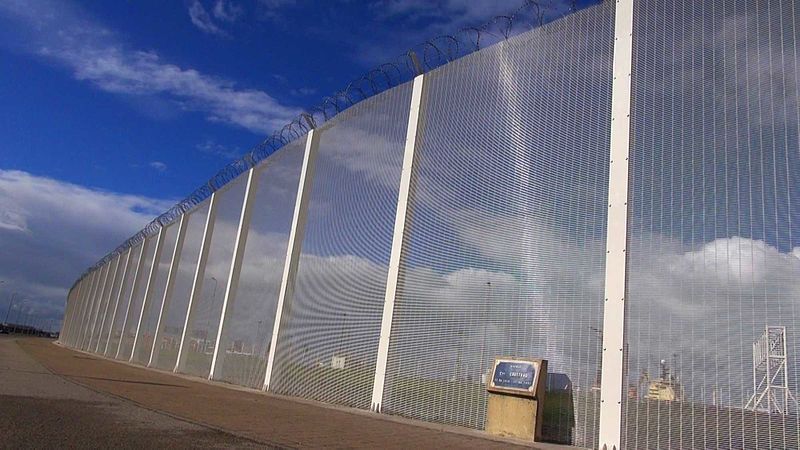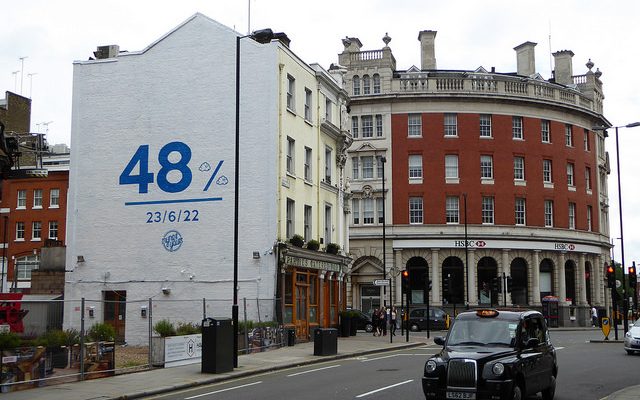On 23 June 2016, the UK went to the polls in a historic referendum to decide whether to leave or remain in the European Union. The country woke up the following day to find that 52% of those 30 million-plus voters had opted to leave the community it joined 43 years previously.
The UK’s decision to leave the EU – popularly known as ‘Brexit’ – surprised many at home, sent shockwaves across Europe and reverberated around the rest of the world. The ensuing weeks and months have been dominated by confusion and uncertainty about what Brexit will actually look like in reality, when it might be implemented and how it will impact on issues such as migration.
Recent months have also seen an intense Conservative Party leadership contest following the resignation of the (pro-Remain) prime minister, David Cameron and the arrival of (pro-Remain) Theresa May as his successor, the appointment of a new cabinet and abolition of the role of minister for Syrian refugees.
Leave vs Remain
June’s referendum fractured the UK government and the main political parties. The official Leave campaign, whose supporters included former Mayor of London Boris Johnson, wanted to see an end to what it called “the supremacy of EU law” and argued that the £350 million sent every week to Brussels (a fact much disputed by their opponents) should instead be spent on the NHS and science research.
The pro-Leave UK Independence Party (UKIP) seized on immigration as their strongest campaign weapon, urging voters to “take back control of our borders” in a widely criticized ‘Breaking Point’ poster launched by UKIP leader Nigel Farage. The poster used a photograph of a long line of migrants and refugees on the Croatia-Slovenia border – part of Europe’s passport-free Schengen area.
Pre-Brexit prime minister David Cameron was a leading voice in the Remain campaign, which argued that UK membership of the EU made it stronger, fueled economic growth through immigration and protected workers’ rights.
Exploring the post-Brexit landscape
Many political pundits have commented on the UK government’s lack of contingency planning for a Leave vote. But on taking up her new role, Theresa May asserted: ”Brexit means Brexit and we’re going to make a success of it.”
In order to leave the EU, the UK has to invoke an agreement called Article 50 of the Lisbon Treaty. This gives both sides two years to agree the terms of their parting. May says she will not start this process before the end of 2016, so a clear picture of what kind of deal the UK will be seeking from Europe in terms of trade and immigration is unlikely to emerge until next year.
The UK has sovereign authority over non-EU migration. But Brexit has direct consequences for intra-EU migration, affecting the estimated 3m EU citizens living in the UK and the 1.3m UK citizens in EU countries. The UK government has stated that any decision on the future of the former is dependent on the position of the latter as Brexit negotiations unfold.
Norway and Switzerland, both outside the EU, are cited as potential models for the UK to follow. Norway is a member of the European Economic Area (EEA) and, as such, must apply the same free movement rules as EU member states but has no vote on the rules. Meanwhile the bilateral Free Movement of Persons Agreement removes restrictions on EU citizens wishing to live or work in Switzerland. These models of residency and work rights for EU citizens that are virtually identical to those of EU member states. So, even if Brexit results in tighter controls of the migration of EU nationals, free movement could be largely unaffected if the UK were to follow a similar model.
The greatest fear for many is that Brexit appears to give legitimacy to the anti-migration feelings expressed by UKIP in its campaigning. Stephen Hale, chief executive of charity Refugee Action, says the result is “a very divided Britain with an uncertain outlook”.
“The public now need clarity that this was not a vote to slam the borders shut, or to fan the flames of prejudice towards 3 million understandably anxious Europeans living and working in the UK today,” he says.

PHOTO: Walt Jabsco / Flickr Creative Commons
The UK on asylum
The Migration Observatory at the University of Oxford notes that, aside from citizenship and the internal market, the UK participates selectively in EU policy on asylum and immigration.
The EU’s Common European Asylum System (CEAS) is intended to ensure that the rights of refugees under international law are protected in its member states. The system sets out minimum standards and procedures for processing and assessing asylum applications, and for the treatment of both asylum seekers and those who are granted refugee status. The UK chose not to participate fully in the recent CEAS reform process, stating that it did not judge that adopting a common EU asylum policy “is right for Britain”.
The UK has also opted out of any refugee quota as part of the EU’s reform of the Dublin system, which currently says asylum seekers must be processed in the first EU country they reach and any that make it any further can be sent back.
In response to the breakdown of that system at the height of the refugee crisis in Europe, new proposals would see Brussels calculate how many asylum seekers each EU country could cope with based on size and wealth. If arrivals exceed this number by 50 per cent, asylum seekers would automatically be sent to other EU states.
The UK is not part of the Schengen area, which has no border controls. The Le Touquet agreement, reached between the UK and France in 2003, permits each country to carry out passport checks on the other country’s soil. Critics say this has accelerated the growth of the “Jungle”, which is currently home to almost 5,000 refugees.
While signed outside the auspices of the EU, so not affected by Brexit, Mayor of Calais Natacha Bouchart believes France should consider renegotiating the agreement, and handle migrants’ asylum requests in Kent rather than in Calais. But a home affairs select committee report published in August has called on the UK government to maintain the Le Touquet agreement as “a priority”.
The report also shows that the UK is struggling to meet its pledge to welcome 20,000 Syrian by 2020. Between September 2015 and March 2016, 1,602 Syrians had been resettled under the Syrian vulnerable persons resettlement scheme aimed at those in camps on the Syrian borders. The UK received only 3.1% of the 1.25m first-time applications for asylum in EU member states in 2015, mainly from Syria, Afghanistan and Iraq.

The fence surrounding the port of Calais next to “The Jungle” in Calais, France. PHOTO: VOA/Nicolas Pinault (via Wikimedia Commons)
Fear of contagion
So could Brexit be an early sign of a European political tsunami? New research by the European Council on Foreign Relations has found 34 anti-EU referendum demands in 18 other countries. ECFR surveyed 45 of Europe’s “insurgent” parties – from the hard left to the far right – on subjects from their country’s membership to the EU to specific policy issues such as refugee relocation quotas.
Of the total interviewed, 36 oppose the EU-Turkey deal on the refugee crisis, many of them voicing concern about the EU-Turkey deal because it will lead to closer co-operation between the EU and Turkey.
ECFR director Mark Leonard says these challenger parties represent “a revolution” in European foreign policy: “Even where they don’t win power directly, they are so politically powerful that they are forcing mainstream parties to adopt their positions.”
Front National (FN) leader Marine Le Pen has been calling for a French EU referendum for three years and promises an in-out vote on France’s EU membership if she is elected next year. She hailed June’s Brexit vote as “a victory for freedom”.
Italy’s Eurosceptic Five Star Movement (M5S), an anti-establishment party founded by comedian Beppe Grillo, won a quarter of the national vote in 2013 and last month clinched the mayoral seats in Rome and Turin. While the M5S is committed to EU membership, it has called for a national referendum on the euro.
Anatole Kaletsky, chief economist and co-chairman of Gavekal Dragonomics, believes the Brexit referendum’s outcome has transformed the politics of EU fragmentation. He wrote recently: “Before, advocates of leaving the EU or euro could be ridiculed as fantasists or denounced as fascists (or ultra-leftists). This is no longer possible.”
HEADER PHOTO: Duncan C / Flickr Creative Commons









